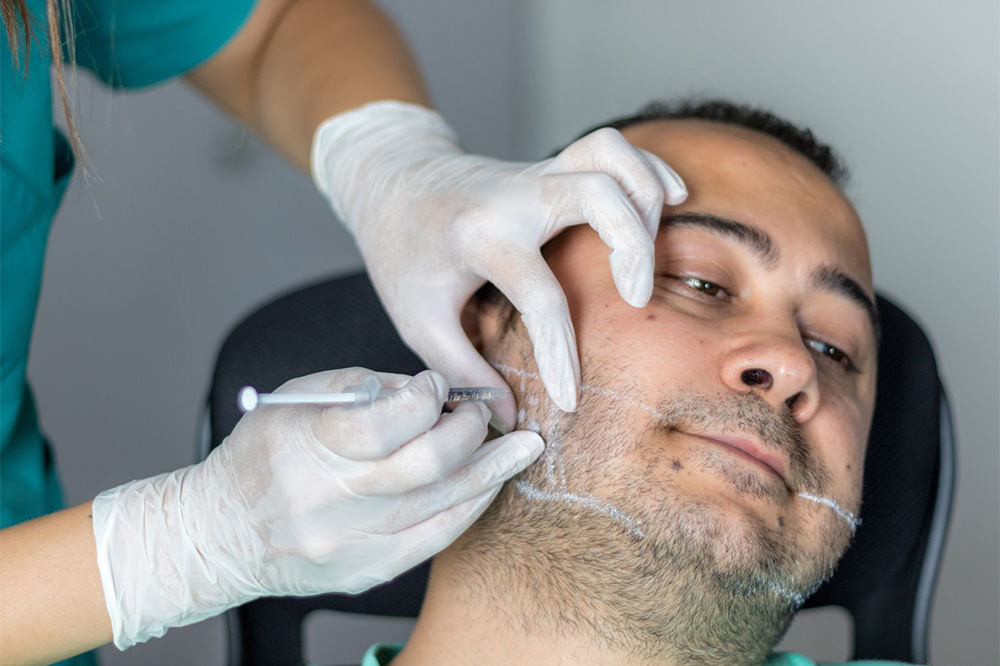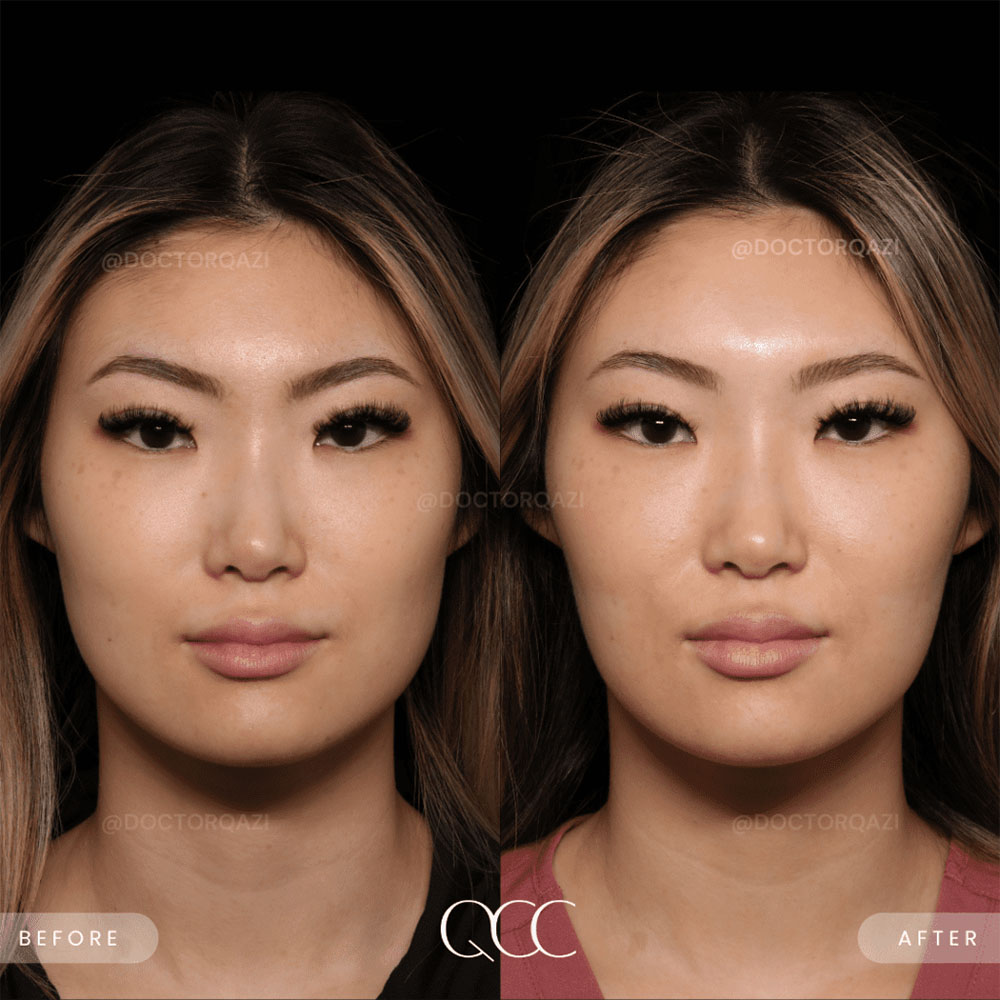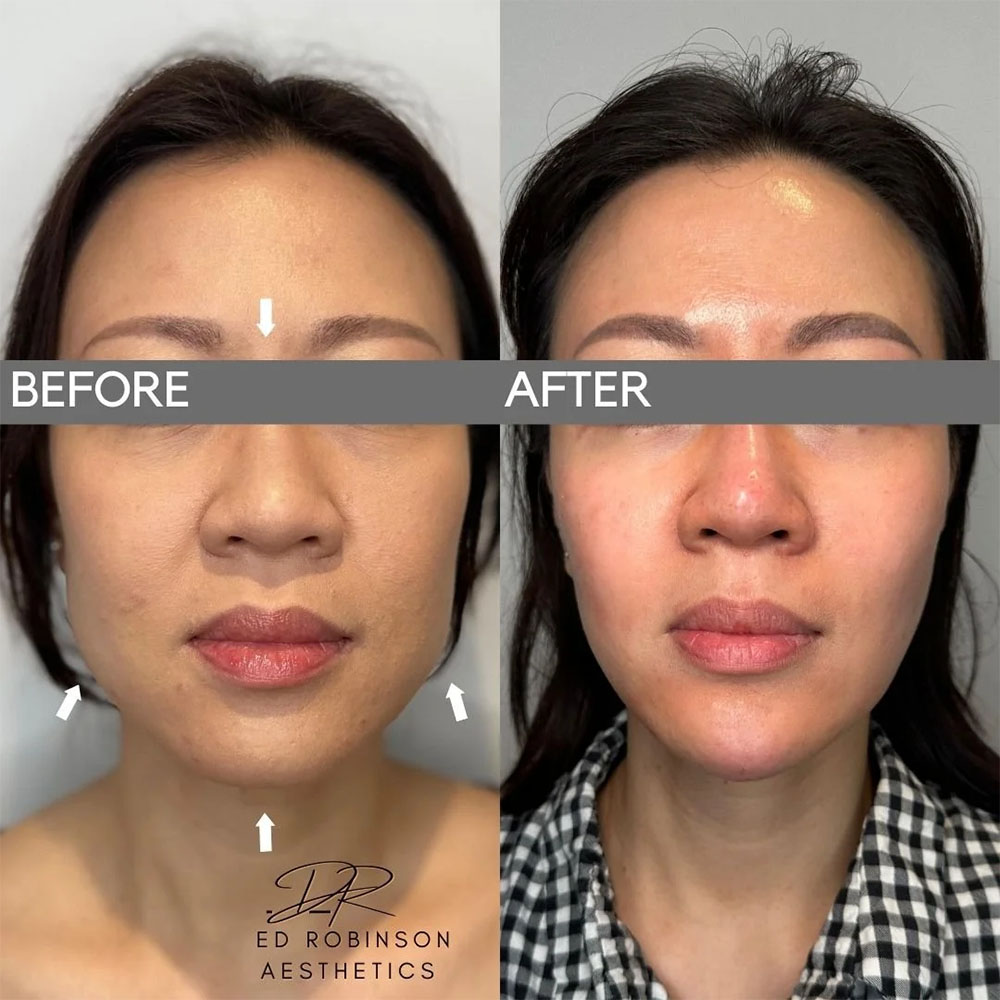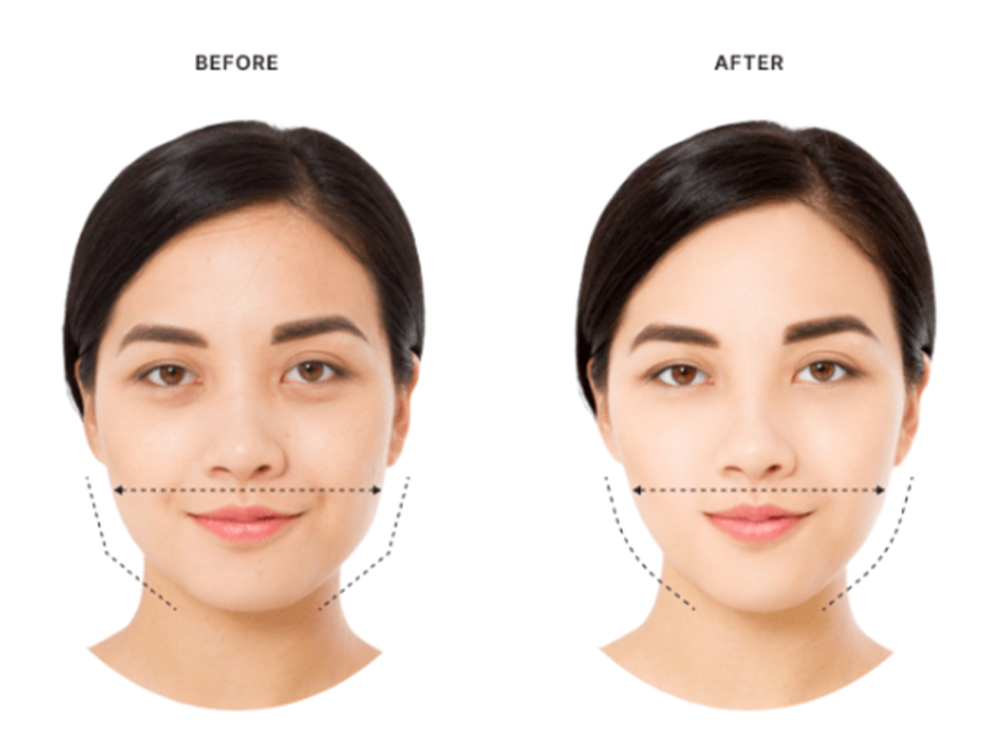
Key Takeaways
- Masseter Botox relaxes the masseter muscles to achieve jawline slimming and improve facial balance.
- Results typically appear within 1–2 weeks, peak at around 6 weeks, and last 4–6 months.
- Treatment is well tolerated, with most patients describing minimal discomfort.
- Aftercare includes avoiding strenuous activity, heat, and alcohol for the first 24 hours.
- Proper training and patient selection are essential for safe, predictable outcomes.
What Is Masseter Botox?
Masseter Botox is the use of botulinum toxin injections to relax the masseter muscles located on either side of the jaw. These muscles are responsible for chewing and clenching, but when they are enlarged, they can create a square or heavy jawline. By carefully injecting Botox into this area, practitioners can reduce muscle activity, leading to a slimmer, more contoured facial appearance.
In aesthetic practice, masseter Botox facial contouring is a popular, non-surgical approach to achieve jawline refinement without downtime. It is also used functionally to treat conditions like bruxism (teeth grinding) and jaw tension.

What Does Masseter Botox Do?
Botox works by temporarily blocking the nerve signals that cause the muscle to contract. In the masseter, this relaxation reduces bulk over time as the muscle becomes less active. The result is a softer, slimmer lower face, often referred to as jawline slimming Botox or non-surgical jawline contouring.
Patients seeking a reduction in a square jawline, or those who feel their face looks too broad, often benefit most. Many also appreciate the dual effect of both cosmetic reshaping and relief from clenching-related discomfort.
How Long Does It Take for Masseter Botox to Work?
Initial effects are typically noticed within 7–10 days, while optimal results usually appear around 6 weeks. This delay occurs because it takes time for the muscle to weaken and for any hypertrophy (muscle bulk) to reduce.
Practitioners should counsel patients that results are gradual and may require repeat treatments to maintain facial reshaping with Botox.

How Long Does Masseter Botox Last?
The effects typically last between 4 and 6 months, depending on factors such as:
- The patient’s metabolism
- The strength of the masseter muscle
- The dosage used
- How consistently are treatments maintained
With regular maintenance, patients often find that results become more durable over time as the muscle continues to reduce in size.
How Painful Is Masseter Botox?
Most patients describe the procedure as quick and tolerable, with only minor discomfort. The injections feel like small pinches, and topical numbing cream or ice can be applied beforehand if needed. Post-treatment soreness is usually mild and resolves within 24 hours.

How to Prepare for Masseter Botox Treatment
Good preparation helps minimize side effects and ensures a smoother recovery. Patients should be advised to:
- Avoid alcohol and blood-thinning medications (like aspirin or ibuprofen) for 24 hours before treatment to reduce bruising.
- Arrive with clean skin, free from makeup or skincare products.
- Share any history of neuromuscular conditions, allergies, or previous reactions to botulinum toxin.
For practitioners, obtaining full informed consent and setting clear expectations are essential parts of preparation.
Who Is a Good Candidate for Masseter Botox?
The best candidates include patients with:
- Enlarged or overactive masseter muscles
- Square or wide jawlines they wish to slim
- Bruxism or clenching habits contributing to discomfort
- No contraindications to botulinum toxin (such as pregnancy, breastfeeding, or certain neurological conditions)
Careful assessment ensures that cosmetic masseter Botox is both safe and effective for the individual.

Masseter Botox Side Effects
Like all injectable treatments, masseter Botox injection complications are possible, but most are mild and temporary. Common side effects include:
- Swelling, redness, or bruising at the injection site
- Temporary tenderness or soreness
- Mild weakness when chewing tough foods in the first week
Less common side effects can include:
- Asymmetry in smile or chewing
- Over-relaxation of the muscle if high doses are used
- Rare allergic reaction to botulinum toxin components
Adhering to proper hyaluronidase safety protocols and careful injection technique significantly reduces risks.
Masseter Botox Aftercare Tips
Successful outcomes with masseter Botox rely not only on the injection technique but also on good aftercare. Patients should keep activity gentle for the first day, avoiding strenuous workouts, alcohol consumption, or exposure to heat sources such as saunas and hot yoga. These can increase circulation and risk of bruising. It is also important not to rub or press on the injection sites in the first 24 hours, as this can displace the product. Sleeping with the head slightly elevated the first night can reduce swelling, while returning to a normal routine is usually safe by the following day. By following these simple steps, patients support both comfort and effectiveness, helping results appear smoothly over the coming weeks.

What Not to Do After Masseter Botox
After receiving masseter Botox, patients should be mindful of habits and activities that could interfere with treatment results. Applying pressure to the treated area, whether by massaging the jaw or leaning on the face, can cause the product to spread beyond its intended site. Similarly, chewing excessively on tough foods or engaging in jaw-strengthening exercises in the first few days may strain the muscle before it has had a chance to relax. Skipping scheduled follow-ups is another common mistake, as consistent treatments are essential for achieving and maintaining optimal jawline slimming results. By avoiding these pitfalls, patients allow the injections to work effectively and predictably.
How much is Masseter Botox Treatment?
The masseter Botox cost varies depending on region, clinic, and the number of units required. On average, patients can expect to pay between $400 and $800 per session. Larger muscles or patients seeking stronger results may require higher doses, which can increase the cost. As a medical professional, your focus should always be on providing precise information and aiming for clear communication about pricing, as well as the likelihood of multiple sessions, as this ensures realistic patient expectations.
Conclusion
Masseter Botox is a cornerstone of non-surgical jawline contouring and a highly effective treatment for both cosmetic reshaping and functional relief. With proper training, technique, and patient education, injectors can deliver safe, predictable, and satisfying outcomes.
For practitioners, mastering this procedure requires not only technical skill but also a comprehensive understanding of facial anatomy and safety protocols. Explore advanced aesthetic medical training for doctors and upcoming modules on Botox training to refine expertise in jawline contouring and patient care.
FAQ
What not to eat after masseter Botox?
Avoid tough or chewy foods like steak or gum for the first few days to minimize strain on the jaw muscles.
How many units for masseter Botox treatment?
Typical treatments range from 20–40 units per side, but exact dosing depends on muscle size and patient goals.
Can you overdo masseter Botox?
Yes. Excessive dosing can cause over-relaxation, facial asymmetry, or chewing weakness. Conservative dosing prevents these issues.
Will my jaw go back to normal after masseter Botox?
Yes. If treatments are stopped, the masseter muscle will gradually regain its original size and strength over several months.
Does masseter Botox mess with your smile?
When performed correctly, it should not. Rarely, improper injection placement can affect smile symmetry, which is why injector skill is critical.
Sources
- Hong SO. Cosmetic Treatment Using Botulinum Toxin in the Oral and Maxillofacial Area: A Narrative Review of Esthetic Techniques. Toxins (Basel). 2023;15(2):82. Published 2023 Jan 17. doi:10.3390/toxins15020082 Available from: https://pubmed.ncbi.nlm.nih.gov/36828397/
- Ferrillo M, Sommadossi E, Raciti L, et al. The Role of Botulinum Toxin for Masseter Muscle Hypertrophy: A Comprehensive Review. Toxins (Basel). 2025;17(2):91. Published 2025 Feb 14. doi:10.3390/toxins17020091 Available from: https://pubmed.ncbi.nlm.nih.gov/39998108/
- Popescu MN, Beiu C, Iliescu CA, et al. Ultrasound-Guided Botulinum Toxin-A Injections into the Masseter Muscle for Both Medical and Aesthetic Purposes. Toxins (Basel). 2024;16(10):413. Published 2024 Sep 24. doi:10.3390/toxins16100413 Available from: https://pubmed.ncbi.nlm.nih.gov/39453189/
- Fedorowicz Z, van Zuuren EJ, Schoones J. Botulinum toxin for masseter hypertrophy. Cochrane Database Syst Rev. 2013;2013(9):CD007510. Published 2013 Sep 9. doi:10.1002/14651858.CD007510.pub3 Available from: https://pubmed.ncbi.nlm.nih.gov/24018587/
Disclaimer:
This article is intended for licensed medical professionals. All protocols, dosages, and treatment insights referenced herein are based on published literature. The content is not intended to encourage application, diagnosis, or self-treatment of unlicensed individuals, and should not be used as a substitute for the clinical judgment of a qualified healthcare provider.

